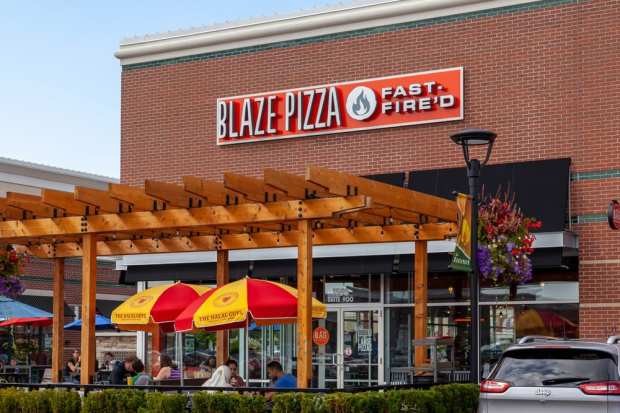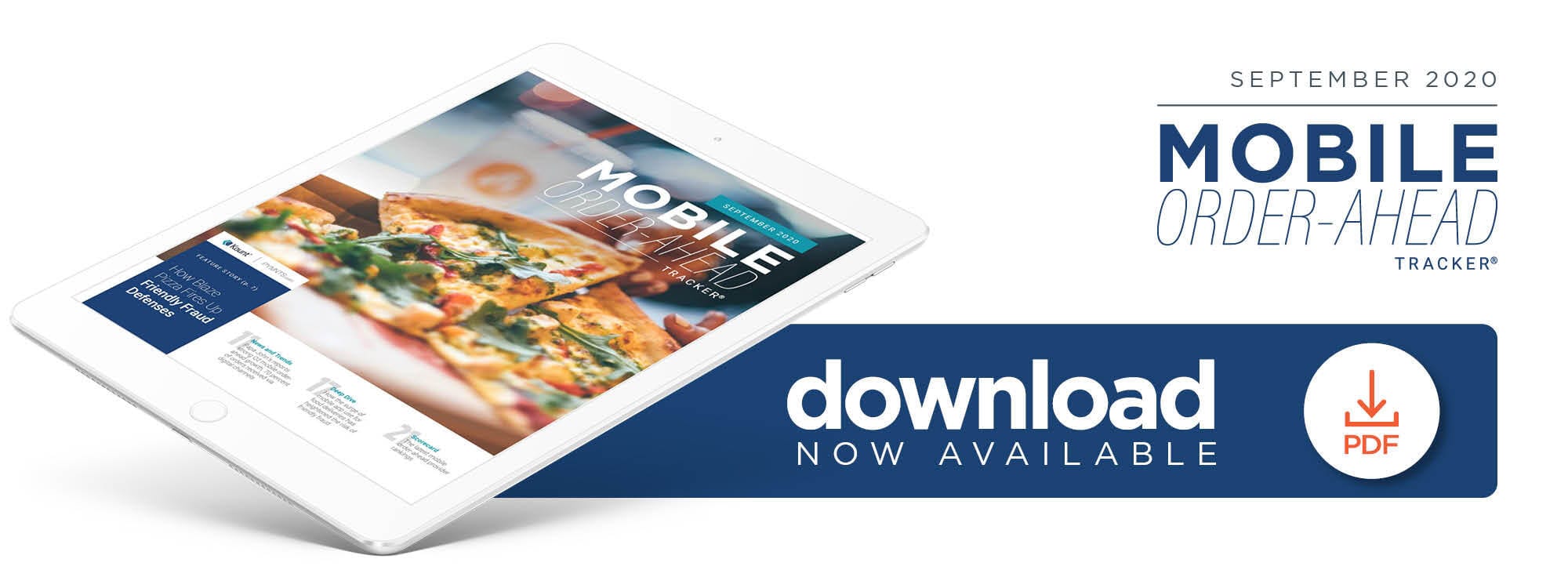How Blaze Pizza Fires Up Friendly Fraud Defenses

Many QSRs are turning to promotions to boost mobile ordering, but must also prevent dishonest consumers from redeeming single-use offers more than one time. In this month’s Mobile Order-Ahead Tracker, Mandy Shaw, CEO of fast casual chain Blaze Pizza, explains how combining scenario planning with fraud risk engines can help QSRs tailor offers for legitimate customers while keeping those who’ve already used the promos from going back for seconds.
Consumers are using mobile apps’ order-ahead features and loyalty perks more often during the COVID-19 pandemic, yet chargeback fraud — also known as friendly fraud — is unfortunately also rising. One report found that 1 percent of all restaurant purchases are targeted by fraudsters — a seemingly small yet deeply damaging rate for eateries that may already be struggling.
Much of the recent increase in chargebacks can be attributed to the substantial rise in mobile order-ahead, as customers abusing the system have little in-person interaction with restaurant staff. Chargebacks were originally instituted as a last resort for customers, but they have gained popularity alongside digital commerce.
“You have to continually evaluate whether the protections or controls that are in place are being abused, and then you have to innovate new solutions. Combating fraud is not a one-and-done process, as people will find new ways to circumvent the best efforts,” said Mandy Shaw, CEO of Pasadena, California-based artisanal pizza chain Blaze Pizza.
Mobile ordering is at the center of business operations for Blaze Pizza and many fast casual dining chains today. Companies are therefore investing in solutions and strategizing how to better distinguish between legitimate customers and fraudsters taking advantage of the higher volumes of digital activity.
A Proactive Approach To Friendly Fraud
Friendly fraud often develops around online promotions at restaurants. Some consumers will attempt to use digital offers in person when they are not valid for in-store use or try to use a promotion more times than permitted, for example.
“We work with our providers to create limits on multiple-use opportunities that are specialized based on the type of offer we’re making,” Shaw said in a recent interview with PYMNTS. “You have to also strike a balance … so that real users aren’t prevented from redeeming.”
The company also works to approach fraud prevention proactively by scenario planning, or strategically imagining how redemptions can be misused and partnering with providers to avert negative outcomes.
“We scenario-plan and try to imagine all the ways redemptions could be abused and then develop controls to prevent egregious redemption,” she said. “As to friendly fraud, the entire industry battles this, and we have external providers that help us manage chargeback fraud.”
Blaze works with a loyalty and engagement platform solution provider to help prevent friendly fraud and also utilizes customer survey platform Tattle to smooth out any negative customer experiences. This platform offers a guest feedback form with questions regarding the visit as well as analytics tools to evaluate performance. Social media feedback is also collected and reported to track consumer sentiment.
Pandemic-Driven Pivots
The shift to digital interactions has forced restaurant brands to quickly provide consistent customer experiences across all channels, often by offering curbside pickup or partnering with new third-party delivery services.
“Our initiatives have been about 360-degree availability across all platforms and consistency of experience,” Shaw said. “We want to be available [so] the consumer [can] decide how they would like to use our experience.”
Blaze Pizza received 80 percent of its business from dine-in customers before the COVID-19 pandemic, but like much of the U.S. restaurant industry, it speedily pivoted its operations when the health crisis struck. Its digital business has since grown more than 180 percent from the prior year.
“We launched curbside pickup in a matter of three weeks because we knew that people wanted contactless [options] and they wanted not to have to get out of their vehicles and come into a restaurant, especially when dining rooms were closed,” Shaw said.
This involved optimizing the customer journey in digital channels and on its mobile ordering platform, she explained. The chain also piloted its first drive lane and curbside pickup two months ago in Fort Myers, Florida.
“The idea is you can order on your mobile device and use the drive lane to pull up to a window to receive your order,” Shaw explained. Blaze plans to roll out drive lanes at additional locations across the country within the next year. The company even offered free delivery early in the pandemic for added incentive and convenience.
“We had promotions with either third-party delivery companies or through our own website or app where we offered free delivery, and we still had about 35 percent of people who chose to come pick up their pizza,” Shaw recalled. “There’s a control factor that folks have that they still don’t want to wait because if you order through one of the third-party companies, it may take an hour, whereas if you pick it up, you generally get it within 15 to 20 minutes, right? We found it fascinating that even when delivery costs you nothing, [some customers] still choose to pick it up.”
Blaze’s delivery landscape has shifted to about equal shares of pickup and delivery for customers using the Blaze Pizza branded mobile app. Many consumers have also shifted to larger family-style orders as they stay at home and work remotely.
Gaining Insights
Blaze found value in managing customer identities across multiple channels because consumers use numerous digital devices in their daily lives.
“The more we know about our individual guests, the better we are at serving them, and data and analytics are key,” Shaw said. “Third-party delivery does continue to be a bit of a barrier for restaurant owners, since you lose some customer insight.”
The long-term impact of the pandemic is uncertain for Blaze and other fast casual chains. The industry is continuing to serve higher volumes of customers via mobile and digital channels, yet the importance of prioritizing the customer will not change, Shaw said.
“Our mantra is ‘guest at the center.’ It’s the quality of the experience, the hospitality, even though it’s digital,” she explained.
Brands can most smoothly navigate the unpredictable landscape by managing these customer relationships and maintaining trust through friendly fraud prevention.

